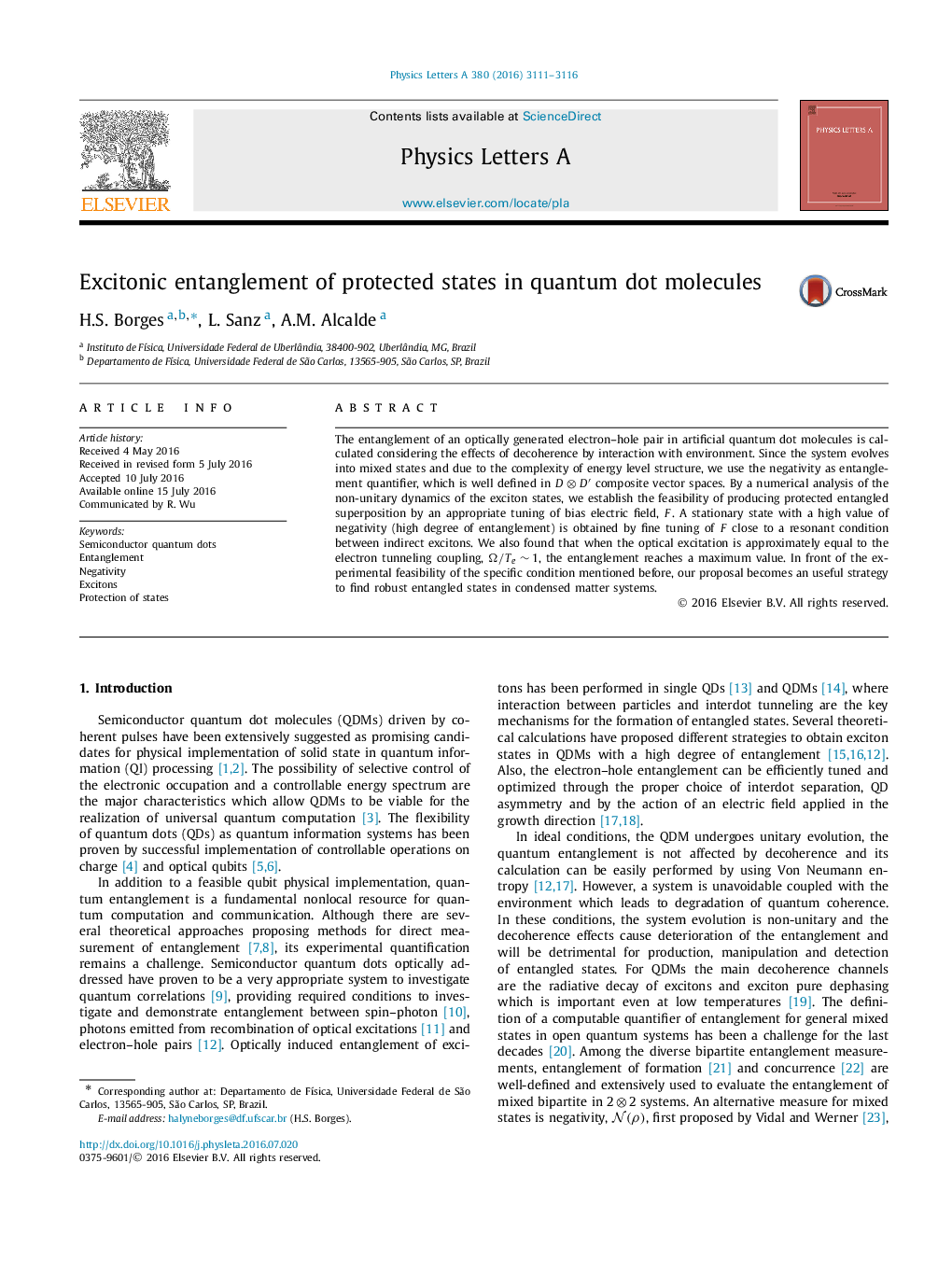| Article ID | Journal | Published Year | Pages | File Type |
|---|---|---|---|---|
| 1866674 | Physics Letters A | 2016 | 6 Pages |
•The controlled creation of asymptotic states in quantum dot molecules is theoretically demonstrated.•We quantify the electron–hole entanglement through the negativity calculation.•We established the conditions under which optimal entangled robust states can be implemented.
The entanglement of an optically generated electron–hole pair in artificial quantum dot molecules is calculated considering the effects of decoherence by interaction with environment. Since the system evolves into mixed states and due to the complexity of energy level structure, we use the negativity as entanglement quantifier, which is well defined in D⊗D′D⊗D′ composite vector spaces. By a numerical analysis of the non-unitary dynamics of the exciton states, we establish the feasibility of producing protected entangled superposition by an appropriate tuning of bias electric field, F. A stationary state with a high value of negativity (high degree of entanglement) is obtained by fine tuning of F close to a resonant condition between indirect excitons. We also found that when the optical excitation is approximately equal to the electron tunneling coupling, Ω/Te∼1Ω/Te∼1, the entanglement reaches a maximum value. In front of the experimental feasibility of the specific condition mentioned before, our proposal becomes an useful strategy to find robust entangled states in condensed matter systems.
